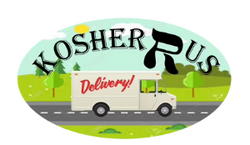The kosher home is an important element in the foundation of Jewish life. Whether you are embarking on an exciting new journey of creating a kosher kitchen or you are looking for ways to further kosher your kitchen, then this is the perfect guide for you. KosherRus has compiled the top 5 essential tips that will help make your kitchen more kosher. Keep on reading.
For the kosher kitchen, quartz countertops are the ideal surfaces. Quartz is an extremely hard surface that's non-porous and does not require sealing, making it a fantastic option for food preparation. For this reason, they are ideal for busy family homes or for those who cook more frequently. Not to mention that quartz counters are easy to maintain and durable.
Double sinks are a must-have in kosher kitchens, a sink for meat and a separate sink for dairy. The reason your sinks should be made out of stainless steel is due to its ability to be kashered (made kosher) and cleaned easily.
If you don't happen to have separate sinks and instead two adjoining, then you must ensure that there is an effective separation between them so that water or food from one sink doesn't not splash to the other.
Since electricity isn’t used on shabbat, you must find clever ways to heat up your food without turning on the oven or microwave. For this reason a lot of appliance manufacturers have created a 'Sabbath' mode option. Nonetheless, many families simply opt out for a hot plate in order to heat up their food. It can safely be turned on prior to shabbat entrance and left on throughout. You may find a hot plate in several appliance stores or online.
Just like your sink requires a separation between dairy and meat, so do your eating utensils. Keeping separate forks, knives, spoons etc. is the cornerstone in the jewish kitchen. Usually, separate utensils are differentiated by different colors. This way you will know for certain the kashrut of the utensil without depending on the drawer it was drawn from. For example, you can decide that all dairy utensils are white, the parve are yellow and the meat are black.
If you don't wish to have different colored utensils in your kitchen, simply find a way to mark them in order to not get them mixed up. You may use a sticker, strand, etc. Of course, it will take you longer to complete but it is a working alternative!
Meat and dairy foods may never be baked or broiled in a single oven and at the same time. Dairy foods should not be baked in a meaty oven, or vice versa.
If you wish to keep an oven parve and use it for both meat and dairy (at separate times), separate racks should be used (or a layer of aluminum foil should be placed on the rack underneath the opposite-type pan). If you don't wish to go through the procedure each time you cook different meals, then it is highly advisable to invent in two separate ovens. This is much more handy and convenient if you happen to cook both dairy and meaty meals at the same time.
Conclusion
We hope that this guide has helped give you better confidence to go ahead and make those changes to your kitchen. Keeping a kosher kitchen is not a one-time thing, but rather a lifestyle. If you are uncertain about any of these tips or wish to get further details about the how’s and why’s, we suggest you consult with a Rabbi.
Nonetheless, you are more than welcome to hop into our online store (https://kosherrus.com/) and check out our variety of kosher household items, such as:

